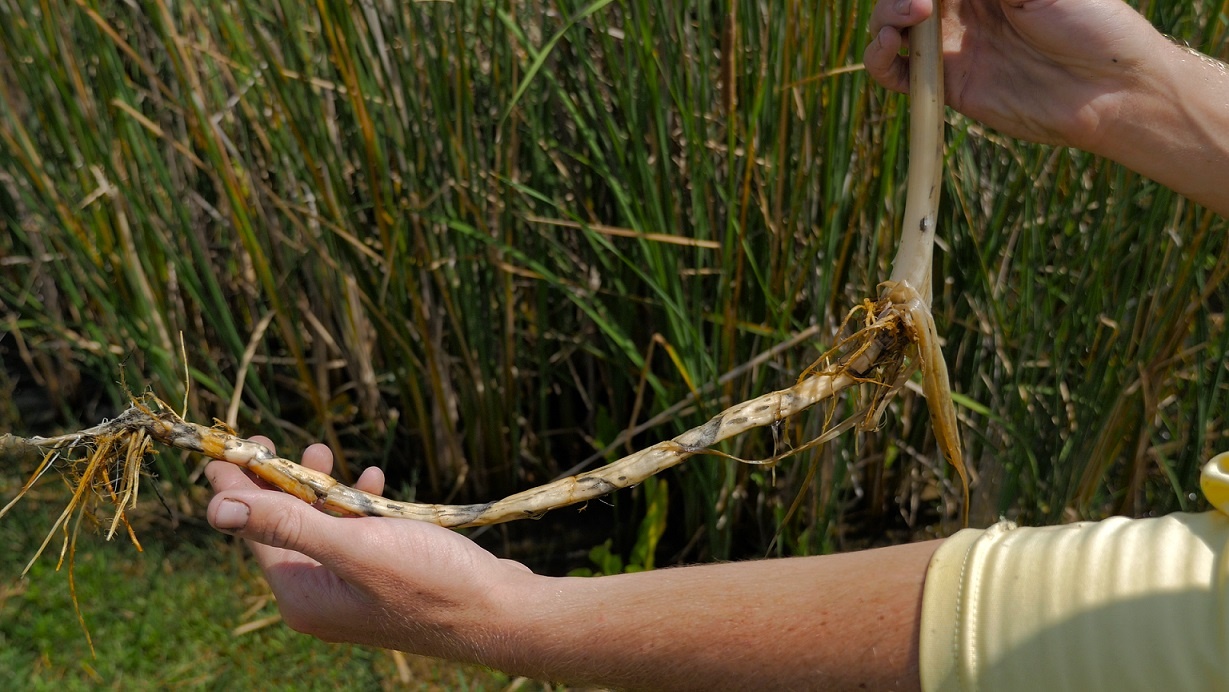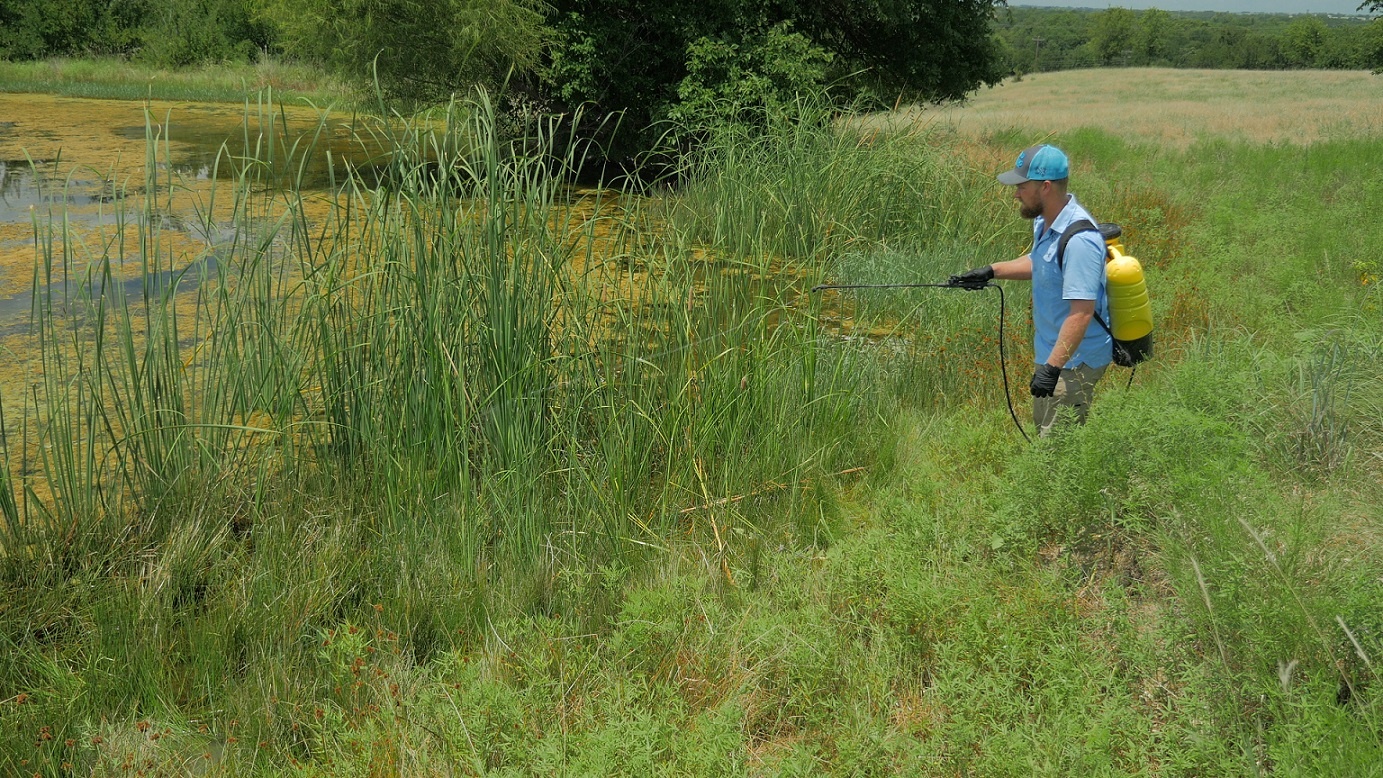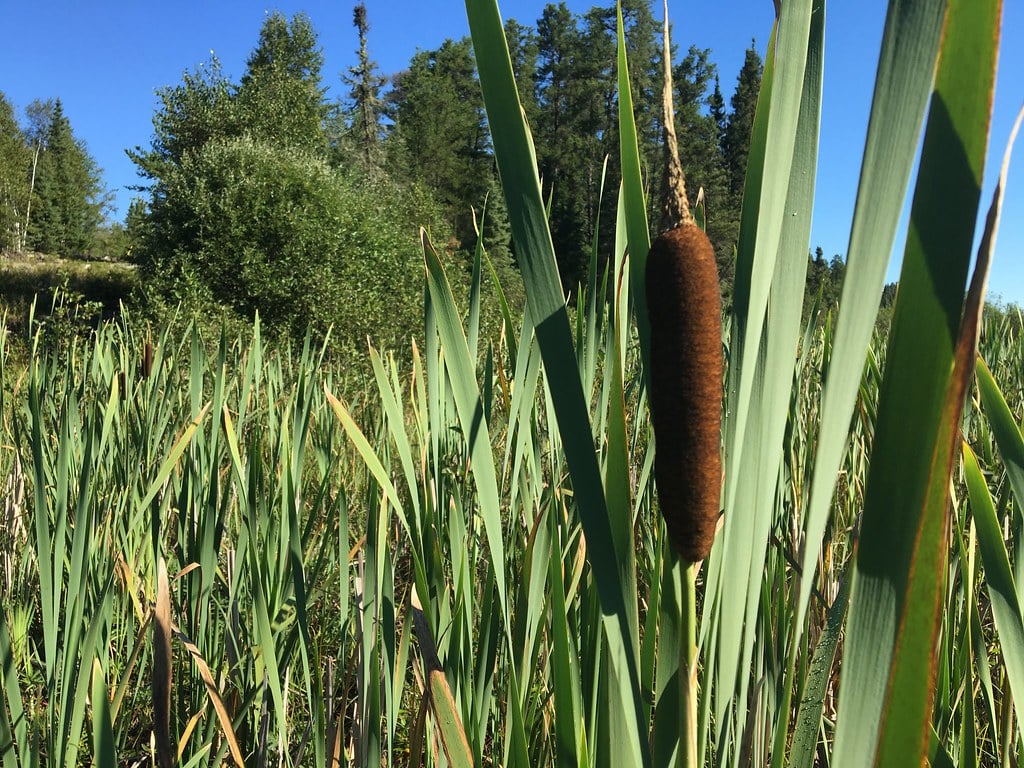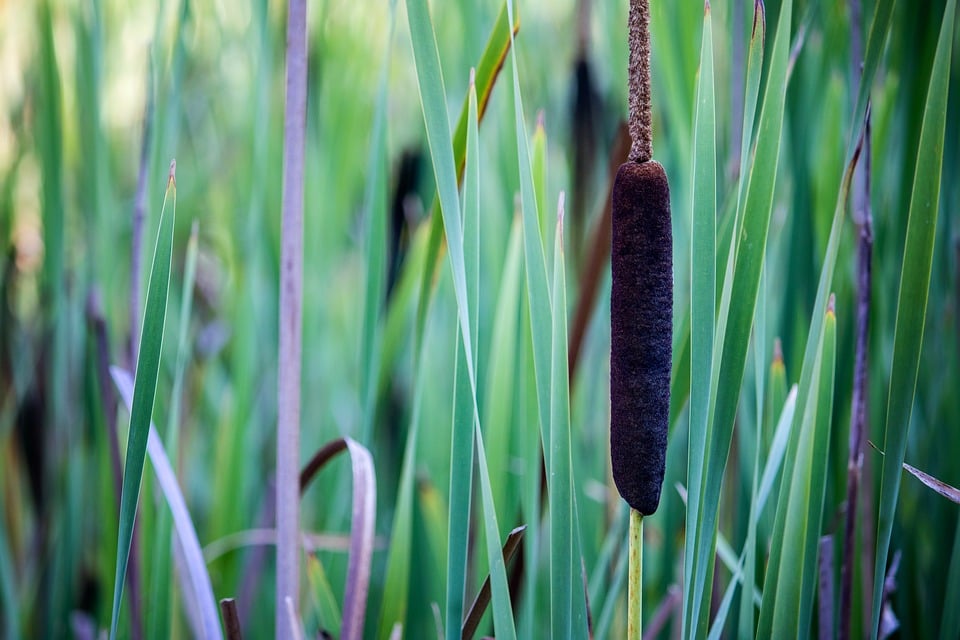Cattails are a common emergent pond plant species. They are a pervasive group of plants with a large distribution. Invasive tendencies of this group often create problems for pond and lake managers, as they are fast growing and prolific. Cattails are often difficult to remove or eradicate without a treatment strategy.
This article will provide detailed management techniques and explanations of strategies to control cattails in your pond, and will cover manual removal, chemical treatment, and how effective chemicals are applied.
Manual Removal of Cattails

Manual removal is the most difficult, time intensive, and sloppy approach to control Cattail growth. Often, removing cattails by hand results in a temporary solution that does not justify the effort required for the task. Cattails spread through rhizomes, or tubers, as well as by seed. The rhizomes are found within the sediment at the base of Cattail stalks that protrude out from the water.
Removing Cattails manually requires complete removal of the tuber. If sections, or portions, of the tuber remain in the sediment the plant will most likely re-establish. Tubers are extremely difficult to remove by hand. A fibrous network of roots grips sediment firmly so sections are likely to be broken during the pulling process. As such, manual removal is not a feasible task to undertake in most situations and is only recommended in ornamental ponds where only a small section of Cattails exist—and even then, it may work to just control encroaching growth.
For larger ponds and lake, there are easier, less laborious options available.
Chemical Treatment for Cattails

Chemical treatment is a seasonally efficient and relatively cost-effective approach for controlling or eradicating Cattail growth. Systemic herbicides, like Glyphosate, used with an aquatic specific surfactant work in conjunction to essentially kill the whole plant—including tubers—by inhibiting certain necessary pathways.
Aquatic specific surfactants are used to allow the herbicide to seep through waxy outer-layers of the plant, increasing the amount of chemical that permeates into the plant. Chemical application of Glyphosate with an aquatic specific fertilizer is best undertaken in late summer and early fall. During this period, most plants have completed the seasonal growth cycle and are actively storing energy for winter-induced dormancy.
Chemicals have a greater opportunity during this time to disperse throughout the entire plant, including any new shoots that have developed from tubers. In the southern portion of North America, most professional lake managers choose to apply chemicals for Cattail control August through November. Safe and effective application of liquid chemical, like Glyphosate mixed with an aquatic specific surfactant, is best dispersed using a back-pack style sprayer while utilizing proper protective equipment.
Both electric pump sprayers and manual pump sprayers work well. However, for large applications, a battery driven pump system will save both time and physical effort. Spraying systemic herbicides safely and effectively requires some standard of environmental conditions to be met.
More Information to Know
Ideally, liquid chemical application should be undertaken on a day without a breeze and when no rain is forecasted. Breezy days will disperse droplets of chemical onto non-target plant species, increasing the amount of potential damage from over-spraying. Regardless of the liquid chemical herbicide used, always carefully read the warnings and application guidelines. Use proper safety equipment like protective eye shields, long shirts and pants, and nitrile gloves.
Any exposure to chemicals should be taken seriously. Chemical herbicides provide the best solution for Cattail control when properly applied. Part of the job of any pond or lake manager is to manage the expectations of their clients. As such, keep in mind that chemical application is part of a strategy to combat overgrown Cattails. As with any strategy, it is just a game plan that may require multiple attempts. For example, don’t be surprised if it take several chemical applications to completely eradicate Cattails.
Invasive species are not known to be easy to eradicate—in fact, just the opposite. Typically, and depending on the environment during spraying, the first treatment results in 80 - 90% of growth affected. The remaining 10-20% will require additional spraying. Cattails sprayed with Glyphosate can take several days to a few weeks to show signs of application.

Be patient and avoid overly saturating the target area with chemical. Glyphosate is effective, but does not act immediately. Wait to determine what area will need additional chemical application to avoid unnecessary expenditures and wasted effort. Lake/pond maintenance plans that include professionals with the technical expertise to treat a wide variety of plant species, are available for any land owner who doesn’t have the time to deal with the problem on their own.
Pond King services an area with a radius of 300 miles around Gainesville, Texas. Both manual removal and chemical application are viable options for Cattail control. However, effectiveness of the management strategy is dependent on plant coverage and pond size.
For smaller ponds, like ornamentals, manual removal may be an option if all of the plant is removed. For larger ponds, typically greater than ½ acre, chemical treatment utilizing Glyphosate with an aquatic specific surfactant is the best option. Spray carefully and methodically.
Typically, Cattails will begin to show signs that chemical treatment has had an effect within a few weeks. Multiple treatments may be needed to completely eradicate a patch of Cattails. For more information regarding lake maintenance contracts, contact Pond King today to discuss how we can be of service.




